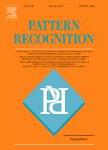版权所有:内蒙古大学图书馆 技术提供:维普资讯• 智图
内蒙古自治区呼和浩特市赛罕区大学西街235号 邮编: 010021

作者机构:Beihang Univ State Key Lab Complex & Crit Software Environm 37 Xueyuan Rd Beijing 100191 Peoples R China Cent Univ Finance & Econ Sch Stat & Math 39 South Coll Rd Beijing 100081 Peoples R China Commun Univ China Sch Journalism 1 Dingfuzhuang East St Beijing 100024 Peoples R China
出 版 物:《PATTERN RECOGNITION》 (Pattern Recogn.)
年 卷 期:2025年第162卷
核心收录:
学科分类:0808[工学-电气工程] 08[工学] 0812[工学-计算机科学与技术(可授工学、理学学位)]
基 金:Guangxi Science and Technol-ogy Major Project, China [AA22067070] NSFC, China CCSE project [CCSE-2024ZX-09]
主 题:Molecular pre-training Graph contrastive learning Dual-helix graph encoder Hard negative samples Transfer learning
摘 要:Trapped by the label scarcity in molecular property prediction and drug design, graph contrastive learning (GCL) came forward. Leading contrastive learning works show two kinds of view generators, that is, random or learnable data corruption and domain knowledge incorporation. While effective, the two ways also lead to molecular semantics altering and limited generalization capability, respectively. To this end, we relate the LinE graph with MOlecular graph coNtrastive learning and propose a novel method termed LEMON. Specifically, by contrasting the given graph with the corresponding line graph, the graph encoder can freely encode the molecular semantics without omission. Furthermore, we present anew patch with edge attribute fusion and two local contrastive losses enhance information transmission and tackle hard negative samples. Compared with state-of-the-art (SOTA) methods for view generation, superior performance on molecular property prediction suggests the effectiveness of our proposed framework.